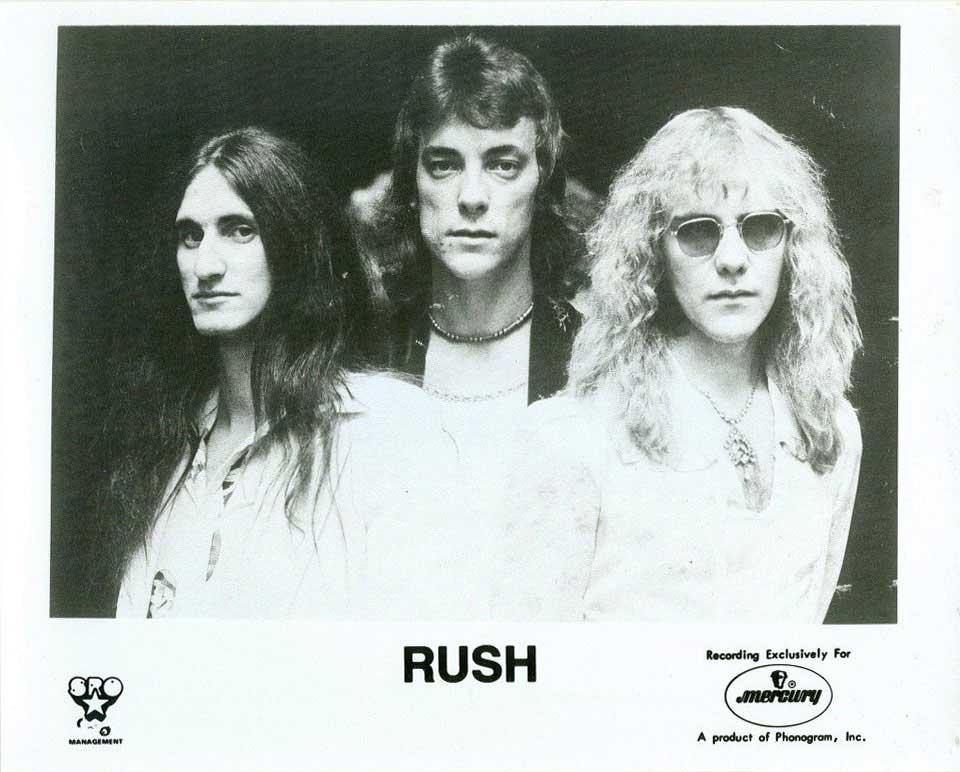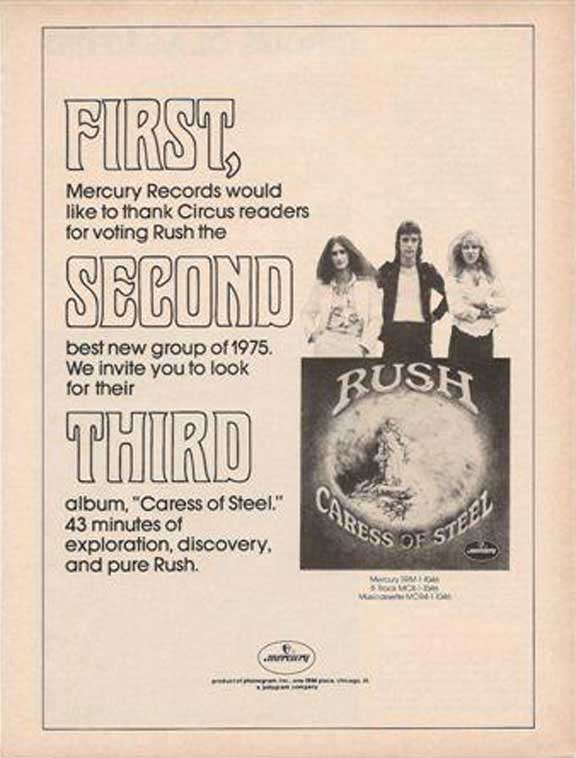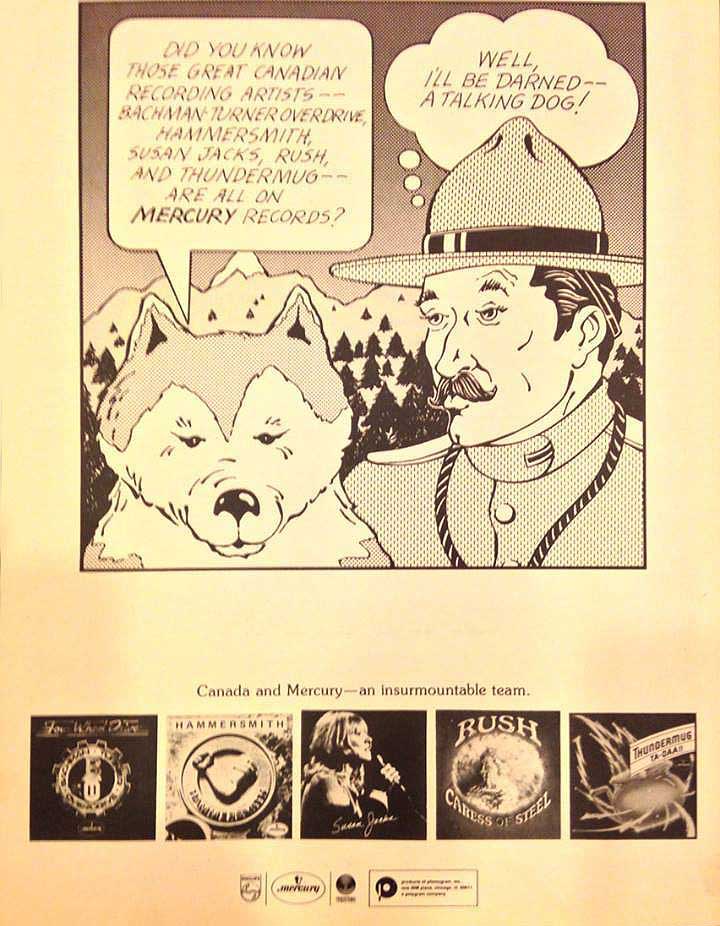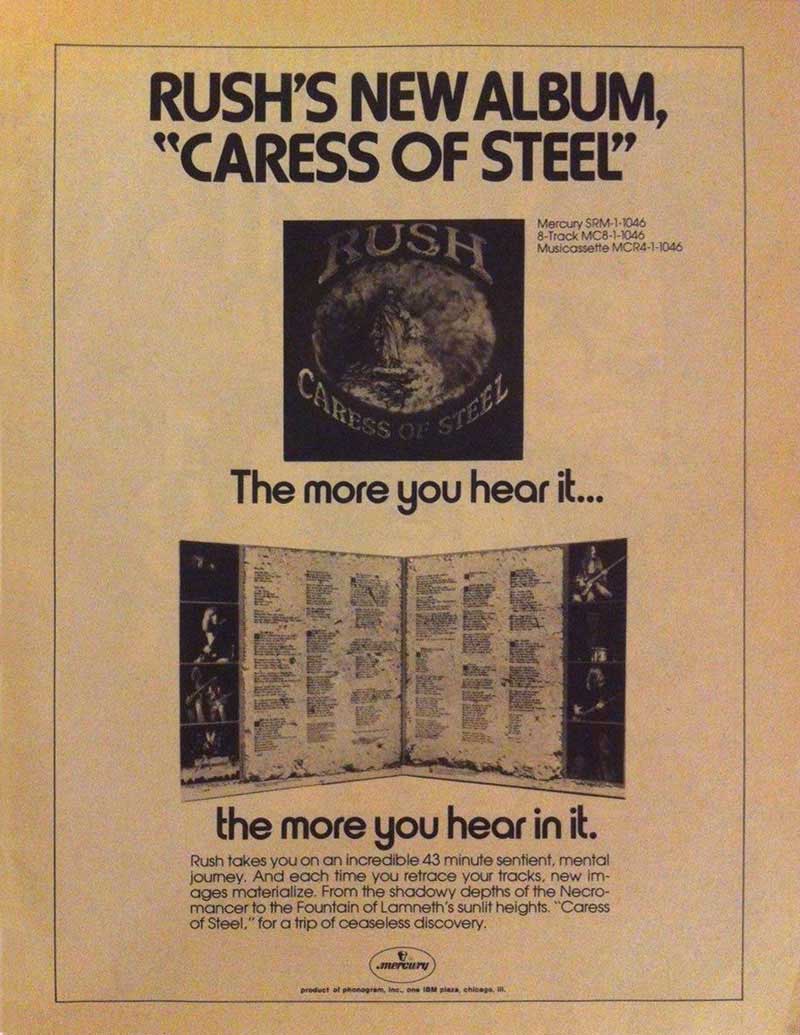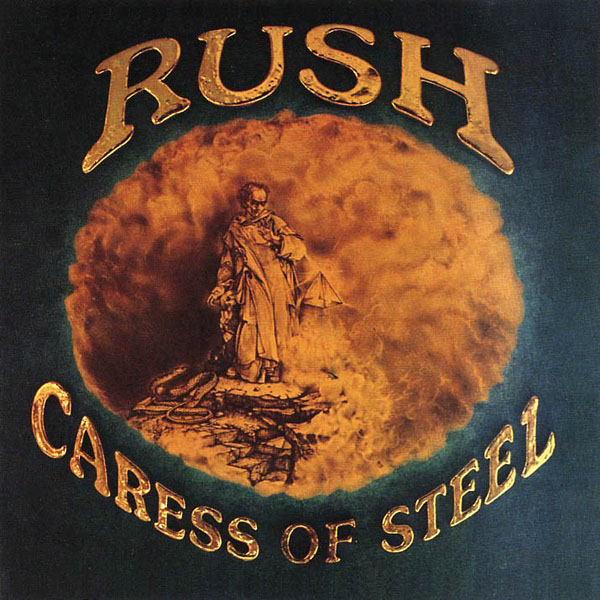
- Bastille Day (4:37)
- I Think I'm Going Bald (3:37)
- Lakeside Park (4:08)
- The Necromancer (12:30)
- Into Darkness (4:12)
- Under the Shadow (4:25)
- Return of the Prince (3:52)
- The Fountain of Lamneth (19:59)
- In the Valley (4:18)
- Didacts and Narpets (1:00)
- No One At the Bridge (4:19)
- Panacea (3:14)
- Bacchus Plateau (3:13)
- The Fountain (3:49)
Geddy Lee - bass and vocals
Alex Lifeson - 6 and 12 string electric and acoustic guitars, classical guitar, steel guitar
Neil Peart - percussion
Produced by Rush and Terry Brown
Engineered by Terry Brown
Arrangements by Rush and Terry Brown
Recorded and mixed at Toronto Sound Studios, Toronto, Canada
Roadmaster - Mr. 'Herns' Ungerleider
Roadcrew - Ian 'Rio' Grandy, Liam 'L.B.L.B.' Birt, J.D. 'Kool Mon' Johnson
Art direction - AGI
Graphics by Hugh Syme
Photography - Terrence Bert, Gerard Gentil, Barry McVicker
Executive production - Moon Records
Thanks to us for making it all possible.
A special hullo to Ape Friendly, Big Macho, M. Louis, Mr. Eisen, The Texas Heartbreaker, Sal de Bain, the Black Oak, Rick & the Shermans, Wolfman Marcus, Hot Sam, C.B. & J.B., Doc Cooper, The Opner and Sophisto Joe.
A personnal thank you, Terry, for your intimate courtesy and native grace of favour.
Correspondance - 55 Glencameron Rd., Thornhill, Ont., Canada.
Dedicated to the memory of Mr. Rod Serling
Mastered by Bob Ludwig and Brian Lee at Gateway Mastering Studios, Portland, Maine
Management by Ray Daniels, SRO Management Inc., Toronto.
All songs written by Lee, Lifeson and Peart
© 1975 Mercury Records © 1975 Anthem Entertainment
Notes
- Mercury/Polygram, September 1975
- Highest Billboard Chart Position: 148 - Certified Gold by RIAA: December 1, 1993
- Reissued February 24, 2015 by Universal Music Enterprises on 200-gram, heavyweight vinyl with a download code for a 320kbps MP4 vinyl ripped Digital Audio album as well as high resolution Digital Audio editions in DSD (2.8mHz), 192khz / 24-bit, 96kHz / 24-bit.
- "Return of the Prince" (3:01 edit) backed with "Return of the Prince" (2:54 edit) was released as a 7" promo single in 1975
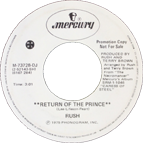
In Their Own Words
"Two nights after the Massey Hall show [sic: two nights after the Massey Hall show Rush played Centennial Hall in London, Ontario - webmaster], we moved our gear into Toronto Sound to record our third album, Caress of Steel. We would have three whole luxurious weeks to do so, it was summer and we were feeling pretty upbeat despite the ambitious task we'd set for ourselves: our first concept album. (Well, half of one, anyway.) The prospect of all that studio time was intoxicating, and quite literally went to our heads. We were in possession of a goodly supply of hash and hash oil to spur on our creative juices, but as the author and radio personality Earl Nightingale once said, 'Wherever there is danger, there lurks opportunity; wherever there is opportunity, there lurks danger...' For us, the second half of that bon mot was the most apt." - Geddy Lee, My Effin' Life
"The idea [for "The Fountain Of Lamneth"] originally came from a time when I was driving from the top of a mountain to the bottom and, seeing the lights of the city beneath me, I got to thinking, What would life be like if you could only measure your position as a person by the level at which you lived up the side of a mountain?' I got to drawing relations, seeing lots of comparisons in this metaphor and eventually put down a rough sketch of the six different parts I thought there would be to such a quest. It was really naïve, I admit that now, it was a ridiculous thing, like writing a thesis on metaphysics or something. But at the time it felt right, what can I say, we did it and we really enjoyed it." - Neil Peart, Sounds, July 16, 1977
"I can't go back beyond 2112 really, because that starts to get a bit hairy for me, and if I hear 'Lakeside Park' on the radio I cringe. What a lousy song! Still, I don't regret anything that I've done!" - Geddy Lee, RAW, October 27, 1993
"We were touring a lot with KISS in those days and they had a song called 'Goin' Blind'. So we were kind of taking the piss out of that title by just coming up with this...Pratt came up with this line, 'I think I'm going bald,' because Alex is always worried about losing his hair. Even when he was not losing his hair, he was obsessed with the fact that he might lose his hair. So he would try all kinds of ingredients to put on his scalp. And I think it just got Neil thinking about aging, even though we weren't aging yet and had no right to talk about that stuff yet. It would be much more appropriate now." - Geddy Lee, Contents Under Pressure
"I remember that Caress of Steel, in the old days of cassettes, had very uneven side lengths. I think one side was 20 minutes and the other was 25, and the record company wanted us to drop a song. We said, 'No way! We went to all that trouble, it's going on the record.' So there is literally nothing unreleased. For us, there really is no vault to clean out." - Neil Peart, Billboard.com, September 14, 2006
"A big influence on me when I was starting out was Pete Townshend and he was such a consummate rhythm guitarist. I gravitated to Jimmy Page, Hendrix, and Clapton for soloing, but there was something about the way Townshend strummed the guitar that was very acoustic-like. 'Lakeside Park' is an example of that. It was written on an acoustic guitar so that strumming came naturally. It translates to an electric well." - Alex Lifeson, Guitar Player, November 2012
Promos
Smartphone Wallpaper
Our RUSH smartphone wallpapers have been modified for a 9:19.5 aspect ratio to fit "most" Smartphones.
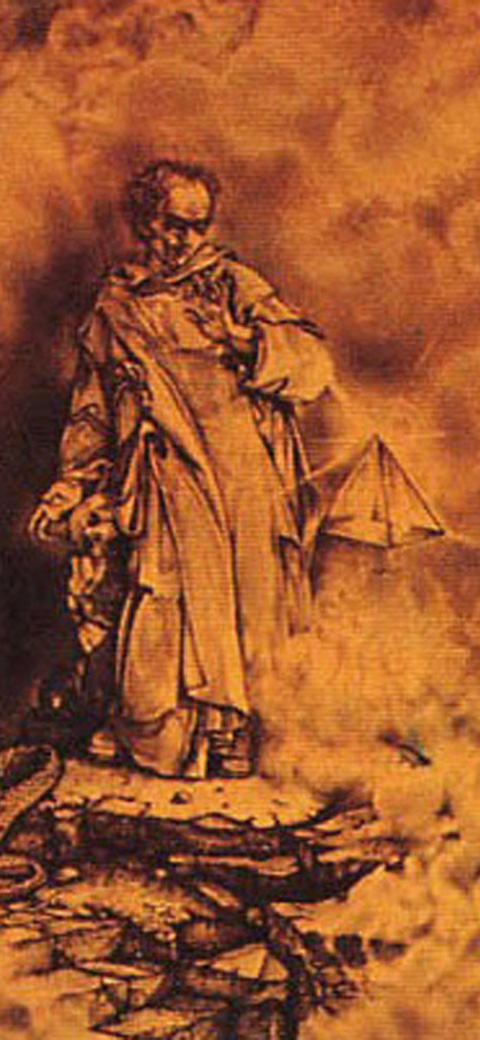
This is a collection of transcripts of magazine and newspaper articles and other media related to this release or coinciding with the time frame surrounding it. This is an ongoing work in progress; feel free to email any suggested additions.
